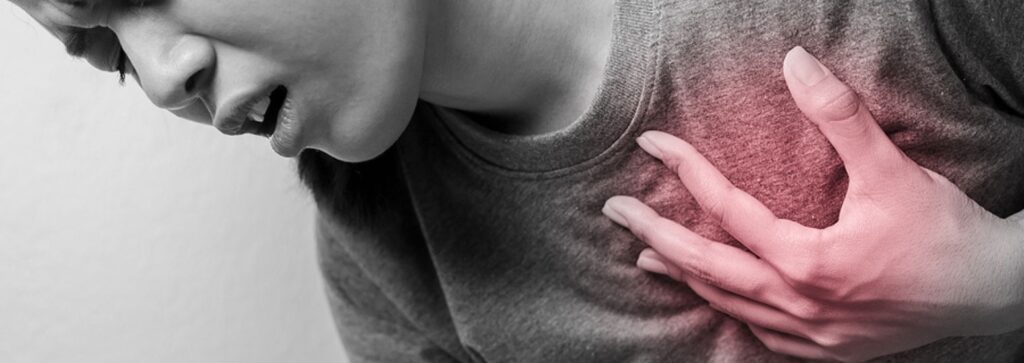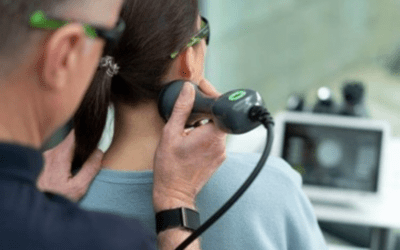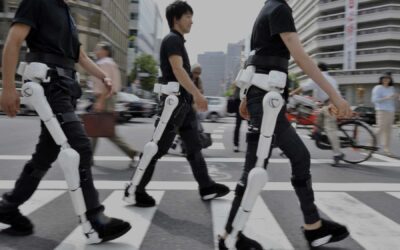Stroke is the leading cause of long-term disability for adults in industrialised societies.
A stroke, sometimes called a brain attack, occurs when something blocks blood supply to part of the brain or when a blood vessel in the brain bursts. The burst or blockage prevents blood and oxygen from reaching the brain tissue. Without oxygen, the tissues and cells in the brain are damaged and die in no time leading to many symptoms.
In either case, parts of the brain become damaged or die. A stroke can cause lasting brain damage and long-term disability.
Regenerative Rehabilitation

Neurological diseases severely affect the quality of life of patients. Novel tools based on new technologies have been developed to improve motor recovery.
Seven promising technologies can improve the rehabilitation of patients with stroke: (1) Robotic devices for lower and upper limb recovery, (2) Brain-computer interfaces, (3) Non-invasive brain stimulators, (4) Neuroprostheses, (5) Wearable devices for quantitative human movement analysis, (6) Virtual reality, and (7) Tablet-pc used for Neurorehabilitation…
- Robotic Devices for lower and upper recovery:
Robots for Regenerative rehabilitation can be mainly divided in terms of the body functioning that they aim to rehabilitate or in terms of their design.
Robotic-assisted gait training in combination with conventional physiotherapy increases the odds of becoming independent in walking.
- Brain-computer interface:
Brain-computer interfaces (BCIs) are a family of various devices aiming to translate measurements of brain activity into commands or messages. So, a BCI is a system directly measuring brain activity associated with the user’s intent and translates using a computer the recorded brain activity into corresponding control signals for applications.
BCI could be used to provide the patient with real-time feedback, to allow for passive monitoring, and to allow for active control of a computer and hence of many devices, using a computer. When the information is derived from the peripheral nervous system measuring neural activity, these devices are classified as Brain-Neural Computer Interface.
- Non-invasive brain stimulators:
The Non-invasive brain stimulators (NIBS) consist principally of two techniques: repetitive Transcranial Magnetic Stimulation (RTMS) and transcranial Direct Current Stimulation (TDCS). In stroke regenerative rehabilitation, the use of TDCS has been regarded as the recovery of motor and cognitive impairments. The activity of the brain can be also enhanced or inhibited, not only monitored or used to control external devices. The use of electrical currents or magnetic fields can modify the functional activities of the brain known as Non-invasive brain stimulation (NIBS). It has rapidly gathered worldwide interest in the therapeutic field.
- Neuroprostheses:
Some Neuroprostheses are based on the principle of functional electrical stimulation (FES), and in recent years it has been used in stroke rehabilitation.
Neuroprosthesis is a device that substitutes, completely or in part, a motoneural function at the peripheral level. In the Neurorehabilitation field, electronical devices may directly stimulate muscles or nerves that should in turn stimulate muscles.
- Wearable devices for quantitative human movement analysis:
This is a fundamental tool for assessing pathological conditions and compensatory motor strategies and for evaluating the improvements during the regenerative rehabilitation of stroke patients. It is also called “gait analysis” because most of these studies are related to human locomotion.
Wearable devices for motion sensing can be accelerometers, force sensors, inclinometers, gyrosensors, and strain gauges, that can be worn or attached to various parts of the body.

With the development of motion-sensing technology, an increasing number of wearable sensors are being developed for gait analysis, increasing the use of wearable sensors in the clinical field.
- Virtual Reality:
Both VR and computer-based stimulation are supposed to have the potential to greatly increase how people are trained during Stroke Rehabilitation.
There are many advantages provided by VR based on this idaea: the synthetic environment is easily changeable, allowing for designing an optimal individualised therapy, VR can provide functional, rich stimuli and motivating context, increasing the active participation of the subject in the regenerative rehabilitation therapy. The data is then collected for monitoring and evaluating rehabilitation progress.
- Tablet-pc used for Neurorehabilitation:
This is a new technology that is changing our lives, modifying the way we interact and communicate: the multitouch tablets.
The ease of downloading and using applications, many of them free, is changing our lifestyle, allowing us to do many things in new forms, from reading newspapers to finding the closest supermarket. It is hence clear that this technology can have potential benefits also in healthcare and rehabilitation fields. Particularly tablet-pc, with its many apps, seems to have potentialities to enhance Stroke Regenerative Rehabilitation Therapy.
Stroke Recovery Technologies
Cyberdyne is a robot that uses the Wearable cyborg HAL [ Hybrid Assistive Limb] Assistive Technology to help people who have lost the use of their lower limbs and rediscover the joy of walking.
Individuals worldwide, especially those suffering from Stroke, use Cyberdyne technology, Lightforce lasers, and Vibramoov therapy to regain their mobility and restore their independence. Existing treatments including rehabilitative therapy aim to facilitate the recovery of motor function!
Rehabilitation Robots, lasers in physical therapy, and Innovative Vibration solutions in rehabilitation, eventually work toward a patient’s stroke rehabilitation. They enhance the sensory-motor functions of patients suffering from motor impairments.
So, connect with us at www.rehabmodalities.com to learn more about our rehabilitation therapy.
To know more write to us: info@rehabmodalities.com



